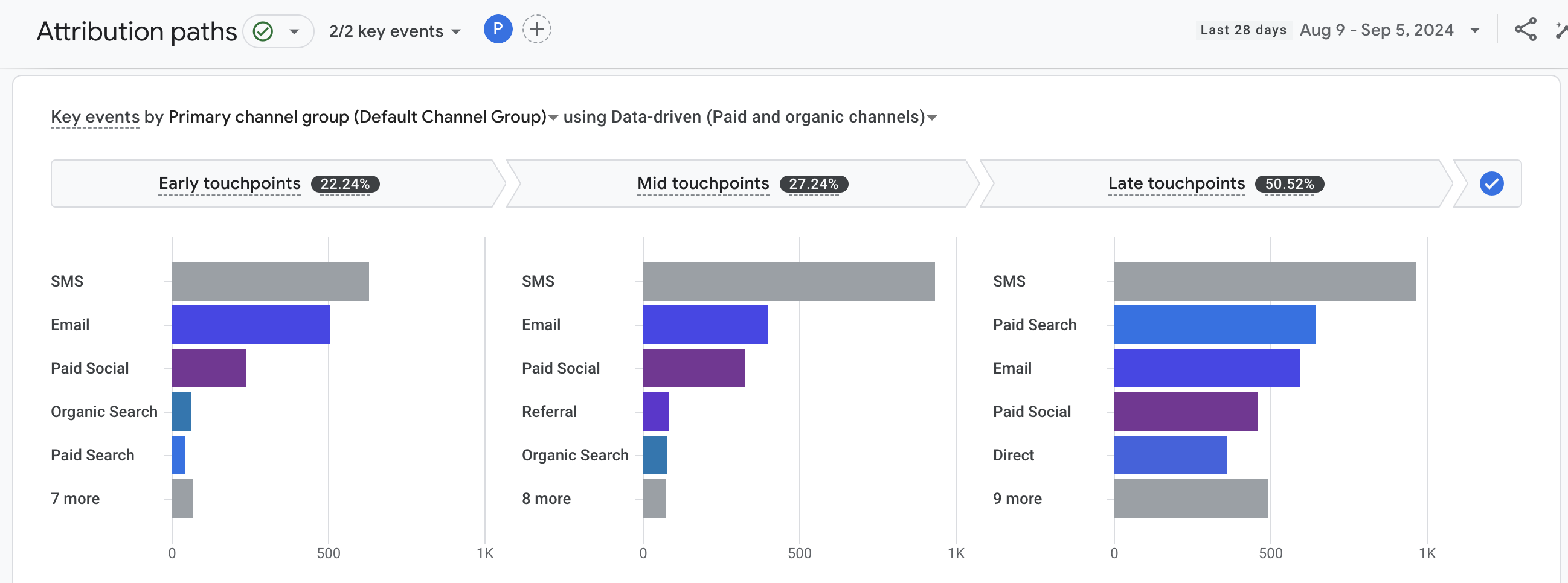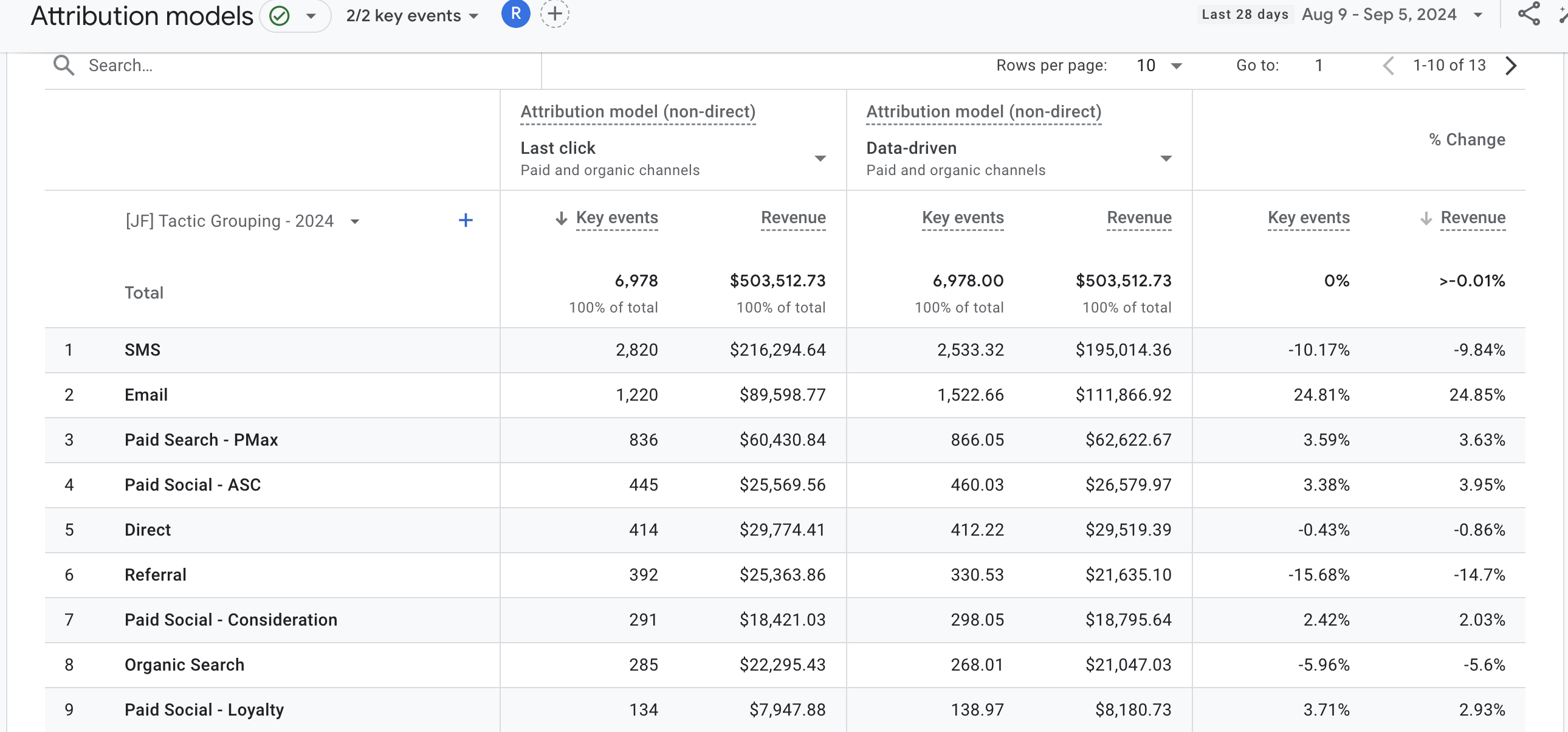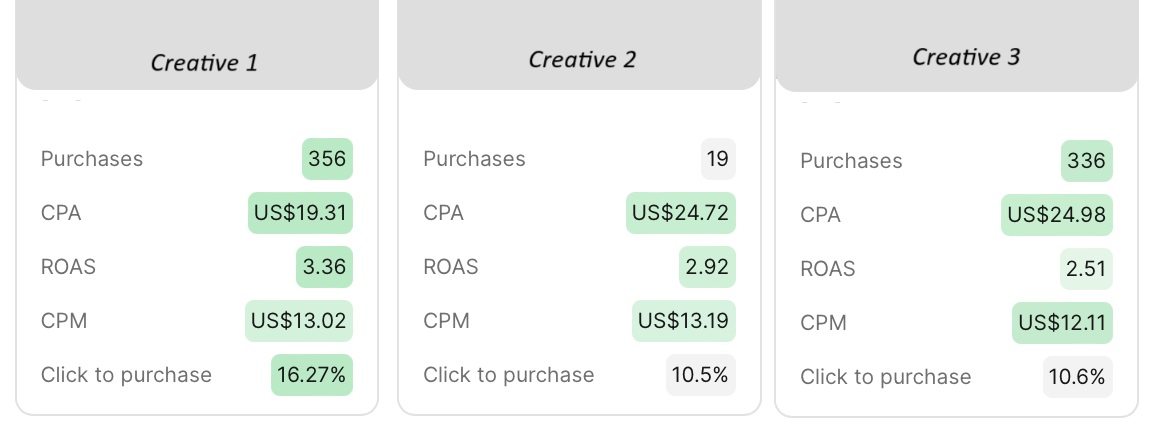As the digital marketing landscape continually evolves, staying ahead requires more than just keeping up with platform updates—it demands strategic adaptation. The recent changes rolled out by Meta in 2024 are set to significantly impact how brands interact with audiences, optimize campaigns, and measure success.
This article distills the key takeaways from a recent internal discussion among marketing professionals, focusing on how these updates can be leveraged for optimal performance. To help you navigate these changes effectively, we'll break down the 7 most important Facebook algorithm updates and how they can impact your campaigns:
- 1. Understanding CPM Fluctuations: Preparing for Cost Variability
- 2. Leveraging Conversion Value Rules: Tailoring Bids for High-Value Audiences
- 3. Embracing Incrementality Measurement: Moving Beyond View-Through Conversions
- 4. Capitalizing on Cross-Channel User Journeys: The Future of Sophisticated Campaigns
- 5. Analytics Integration: Enhancing Cross-Platform Data Utilization
- 6. Utilizing Facebook Lookalike Audiences: Expanding Reach with Advanced Segmentation
- 7. Streamlining Campaign Testing: Enhancing Efficiency in Creative Evaluation
- Final Thoughts: Strategic Adaptation in a Dynamic Landscape
1. Understanding CPM Fluctuations: Preparing for Cost Variability
Key Insight:
The rise in Cost Per Thousand Impressions (CPM) is a trend that Meta users are noticing, driven by Meta's adjustments to provide "better traffic." However, discerning the cause of these increases is critical, especially amidst external factors like election ad spend.

Strategic Action:
- Test Audiences: If the CPM for retargeting audiences increases, test broader audiences in awareness campaigns to offset the rise and help maintain a stable average CPM.
- Monitor and Compare: Regularly track CPM changes in your campaigns, particularly during high-ad-spend periods like elections. Compare these against historical data to understand if the increase is due to Meta's algorithm changes or external market conditions.
- Adjust Budgets: Be prepared to adjust your budget allocations, especially if CPMs are rising without a corresponding increase in conversion rates.
Decision-Maker Takeaway:
Understanding CPM trends is crucial for budget planning and ensuring your ad spend yields the best possible return on investment (ROI).
2. Leveraging Conversion Value Rules: Tailoring Bids for High-Value Audiences
Key Insight:
Meta's introduction of conversion value rules, which allow marketers to adjust bids based on specific audience attributes, offers a powerful tool for enhancing campaign efficiency. This feature, similar to a bid multiplier in PPC, enables brands to target high-value customer segments more aggressively.

Strategic Action:
- Identify High-Value Audiences: Use historical data to pinpoint customer segments with higher lifetime value (LTV) or lower customer acquisition cost (CAC). For example, if females aged 25-34 typically yield better results, increase bids for this demographic.
- Test and Refine: Implement conversion value rules in a controlled manner. Start with a small budget allocation to test the impact on your desired outcomes, such as new customer acquisition or higher average order values.
Decision-Maker Takeaway:
Customizing your bidding strategy based on audience value is essential for maximizing ROI. This approach allows for more precise targeting, ensuring that your ad spend is concentrated on the most lucrative segments.
3. Embracing Incrementality Measurement: Moving Beyond View-Through Conversions
Recently, we wrote about the basics of Meta Ads attribution settings. You can find all you need to start with analyzing your attribution in that blog post. Now, we're going a step up, discussing how to implement new attribution settings into your strategy.
Key Insight:
Meta's new attribution settings, which focus on measuring incrementality, mark a significant shift from the traditional reliance on view-through conversions. This approach aims to provide a more accurate picture of how your ads drive incremental business results.

Strategic Action:
- Evaluate Current Attribution Models: If your campaigns are heavily dependent on view-through conversions, it's time to reassess. Incrementality testing can provide a clearer understanding of the actual impact of your campaigns.
- Collaborate with Meta Reps: Ensure that your Meta account is set up to utilize these new attribution tools. Regular communication with your Meta representative can help you stay updated on beta features and optimize their implementation.
Decision-Maker Takeaway:
Transitioning to incrementality measurement will likely require a shift in how success is defined and measured. However, this approach can lead to more accurate insights and better decision-making.
4. Capitalizing on Cross-Channel User Journeys: The Future of Sophisticated Campaigns
Key Insight:
Meta's ability to account for cross-channel user journeys represents a leap forward in attribution accuracy. This feature will allow brands to better understand how interactions across different platforms contribute to conversions.

Strategic Action:
- Feed Relevant Data into Meta: Consider integrating data from various touchpoints, such as abandoned cart emails, into your Meta campaigns. This could help Meta better predict conversion likelihood and optimize ad delivery.
- Develop Cross-Channel Campaigns: Start planning campaigns that intentionally span multiple channels. For instance, coordinate your Meta ads with email marketing and PPC efforts to create a cohesive customer journey that maximizes conversion potential.
Decision-Maker Takeaway:
Understanding and leveraging cross-channel journeys will be essential for advanced marketing strategies. Brands that excel in this area will likely see significant improvements in overall campaign performance.
5. Analytics Integration: Enhancing Cross-Platform Data Utilization
Key Insight:
Meta's enhanced analytics integration, particularly with Google Analytics (GA), allows for more sophisticated cross-platform data utilization. The goal is to solve the lack of consistency between the Meta dashboard and third-party analytics data. This development is crucial for brands relying on multi-channel attribution and customer journey analysis.


Strategic Action:
- Ensure Robust GA Integration: Verify that your Meta campaigns are fully integrated with GA. This integration is key for feeding comprehensive data into Meta's algorithms, enhancing its ability to optimize ad delivery.
- Define parameters to help enhance custom segments that can feed the algorithm with the much-needed info to optimize for the right audience. For example, you can define a custom event such as Email Sign Up and then set it as your Meta campaign conversion objective.
- Explore Multi-Touch Attribution: Leverage the data from GA to understand the full customer journey across channels. Use this insight to inform your bidding strategies and optimize your campaigns for better cross-channel performance.
Decision-Maker Takeaway:
Cross-platform data integration is not just a technical requirement but a strategic opportunity. It enables a deeper understanding of customer behavior and more informed decision-making.
6. Utilizing Facebook Lookalike Audiences: Expanding Reach with Advanced Segmentation
Never created a Facebook lookalike audience before? Don't worry! Just check out our previous blog post guiding you step by step through Facebook lookalike audience creation. Here, we're digging into advanced audience segmentation.
Key Insight:
The ability to create 11-20% lookalike audiences via Meta's API is a game-changer for expanding reach to new, yet highly relevant, customer segments. This feature, though lesser-known, offers a cost-effective way to broaden your audience base.

Strategic Action:
- Test Wider Lookalikes: Begin experimenting with these larger lookalike segments. Focus on strong custom audiences, such as high-LTV customers, to ensure that the expanded reach remains aligned with your brand's target market.
- Monitor and Optimize: As you test these new audiences, closely monitor their performance relative to more traditional segments. Adjust your strategy based on which segments deliver the best results.
Decision-Maker Takeaway:
Expanding your use of Facebook lookalike audiences can be a powerful way to grow your customer base without significantly increasing costs. It's an effective strategy for reaching new customers who are likely to engage with your brand.
7. Streamlining Campaign Testing: Enhancing Efficiency in Creative Evaluation
Key Insight:
Efficient testing of new creative and ad formats is crucial in a rapidly changing digital environment. However, without a structured approach, it's easy for valuable insights to be lost or for ineffective ads to drain resources.

Strategic Action:
- Implement Structured Testing Protocols: Develop a disciplined approach to testing, such as dedicating a specific portion of your budget to testing new creatives. Document hypotheses, test variables, and results to build a comprehensive understanding over time.
- Use Automation Tools: Consider using tools like automated rules within Meta or third-party platforms to manage your testing process. Automation can help ensure that testing remains consistent and insights are actionable.
Decision-Maker Takeaway:
Structured and efficient testing processes are vital for continuous improvement. They allow for better resource allocation and more reliable insights, leading to more effective campaigns.
Final Thoughts: Strategic Adaptation in a Dynamic Landscape
The 2024 changes to Meta's advertising platform offer both challenges and opportunities for marketers. By understanding and strategically adapting to these updates, decision-makers can position their brands to not only survive but thrive in this new landscape.
Whether it's adjusting to rising CPMs, leveraging new bidding strategies, or integrating cross-channel data, the key lies in staying informed and being willing to experiment. As the digital marketing environment continues to evolve, those who adapt quickly and strategically will be the ones who come out ahead.
Ready to test your knowledge? Take this 1-minute quiz and discover how much information you've retained!
